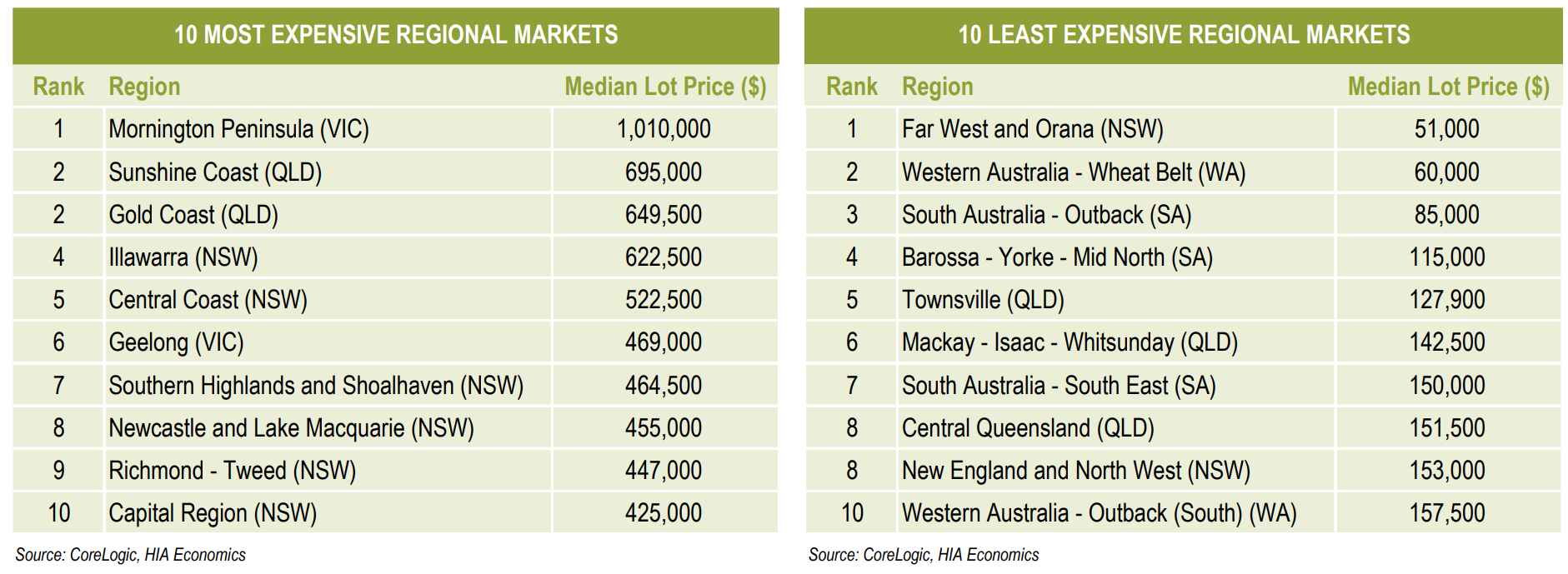But shortage of supply remains, new data shows

The price of residential land declined 0.2% in the September 2022 quarter, signifying the arrival of a long-awaited period of land price stability.
Despite the promising data, Housing Industry Association leaders warn that the market is merely registering the blow to consumer confidence that consecutive RBA rate hikes have dealt rather than an improving land supply.
HIA Economics has released the HIA-CoreLogic residential land report covering home sales activity across 51 Australian housing markets during the third quarter of 2022. The period saw new residential land prices remain “relatively stable” from the previous two quarters, dipping by 0.2% to $328,954.
HIA senior economist Tom Devitt (pictured above) called the stabilisation of new residential land prices a “relief” after prices shot up by more than 25% between the past two years.
Residential land prices fell even further on a per-square-metre basis by 5.4%, which the HIA-CoreLogic report chalked up to buyer demand for space and amenity prevalent in both capital cities and regions. This trending demand for space first observed during the pandemic has only increased in the past year.
On a regional basis, the report revealed that prices for new residential lands stalled in most regions and started to fall in others.

This trend coincided with the RBA’s steepest rate-hiking cycle in decades, confirming most market survey conclusions that Australia’s consumer confidence and borrowing capacity are at some of their lowest levels.
The HIA-CoreLogic report also showed that for the third quarter in a row, new residential land sales hit a new, record-breaking low – this time registering only 4,405 lots sold in the September 2022 quarter.
“This stabilisation of new residential land prices and falling sales volumes do not reflect an end to underlying shortages of land,” Devitt said. “Rather, they reflect a combination of worsening affordability and the shock of the RBA’s rate hiking cycle to consumer confidence and borrowing capacity. Declining prices, together with record low sales volumes, are disguising the underlying shortage of land in the short term.”
The HIA-CoreLogic report pointed out that new residential land sale volumes were on a decline since late 2020, when land prices were soaring to record-highs.
“This is strongly indicative of a shortage of shovel-ready land in the face of strong demand,” said Devitt.
The recovery of the wavering residential lot demand depended on the RBA’s future cash rate decisions. If demand recovered, however, the underlying land shortage would worsen Australia’s housing affordability issues and the already tight rental market.
“Lower land prices and more affordable housing must be driven by a greater supply of land, shorter delivery times, and fewer regulatory and tax imposts – not by the destruction of confidence,” said Devitt.
Looking forward, CoreLogic economist Kaytlin Ezzy expected residential land prices to fall further – and at a faster pace – in the coming months.
“Australia’s residential land market typically follows the established dwelling market, which fell by 4.1% over the three months to September,” Ezzy said. “Additional rate hikes, coupled with continually high construction costs, will add additional downward pressure on prices, with steeper declines expected in the December quarter 2022 and into 2023.”



